How RPA Enhances Customer Service
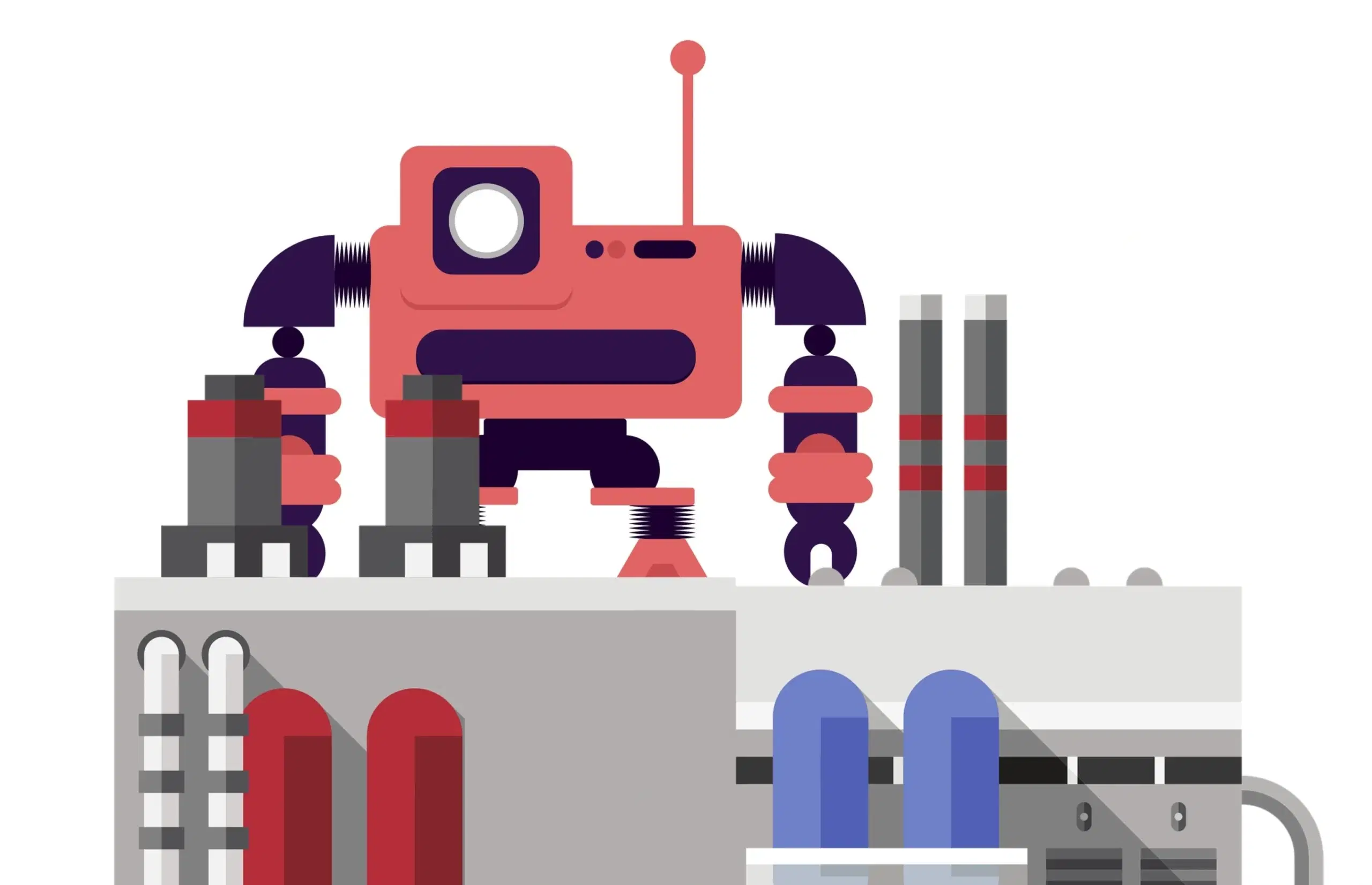

This article explores the potential benefits and challenges of implementing Robotic Process Automation (RPA) in customer service (CS), focusing on improving the overall customer experience. It will cover the definition and advantages of RPA, steps for implementation, best practices, challenges, real-world implementations, and future prospects. The goal is to provide insights for businesses considering RPA as a tool for enhancing their CS operations.
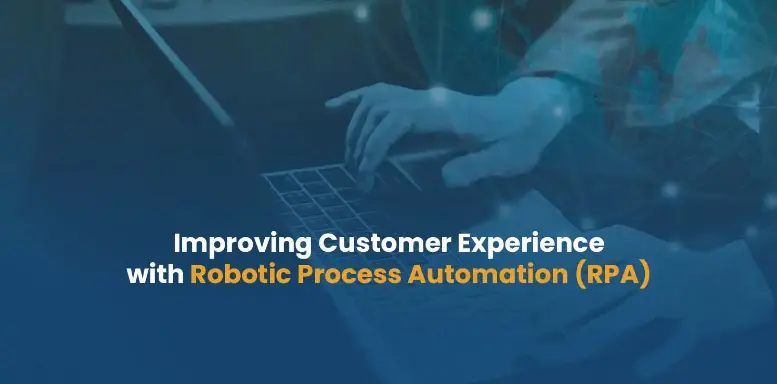
What Is Robotic Process Automation (RPA)?
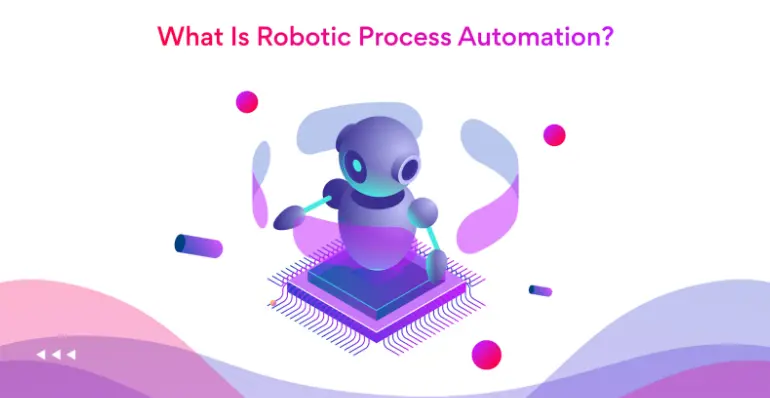
Robotic Process Automation (RPA) is a rapidly emerging technology transforming how businesses operate. At its core, RPA is a software tool that automates repetitive and manual tasks typically performed by humans. These tasks can range from data entry and data processing to customer service and support functions.
RPA tools utilize algorithms and machine learning to perform these tasks with minimal human intervention, significantly improving efficiency, productivity, and accuracy. RPA technology is based on the principles of artificial intelligence (AI) and machine learning, which enables it to learn and adapt to new tasks and processes over time. This means that RPA can improve its performance as it continues to work and gather data. It also means that RPA has the potential to significantly reduce the need for human intervention in many business processes.
As RPA continues to evolve and gain popularity, it is expected to play an increasingly important role in many industries, including finance, healthcare, manufacturing, and customer service. The benefits of RPA are numerous, including cost savings, increased efficiency, and improved accuracy.
Understanding Robotic Process Automation
Robotic Process Automation (RPA) is a rapidly growing technology changing how businesses operate. It is a software technology that uses Artificial Intelligence (AI) and Machine Learning (ML) to automate routine, repetitive, and mundane tasks that humans typically perform. RPA tools can interact with computer systems in the same way as human users, enabling them to perform tasks such as data entry, data processing, and customer service without human intervention. RPA is based on the principles of software robots, which are designed to mimic human actions and behaviors. These software robots can perform tasks with speed and accuracy without the need for breaks or downtime, making them highly efficient and effective. RPA technology is highly adaptable, enabling it to learn and adapt to new tasks and processes.
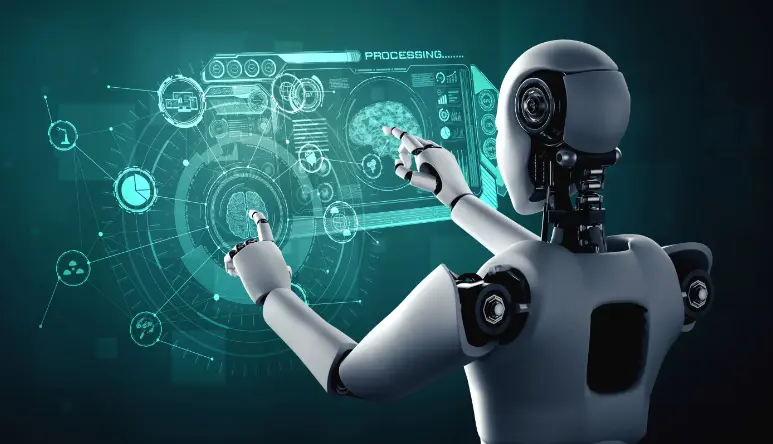
One of the key benefits of RPA is that it can be integrated with existing systems and applications without requiring significant changes to be made to those systems. This makes it an ideal solution for businesses looking to automate their processes without incurring significant costs or downtime. RPA technology is highly scalable, enabling businesses to expand their automation efforts as their needs change and grow. With RPA, businesses can achieve significant cost savings, improve efficiency and accuracy, and free up human resources to focus on more complex tasks requiring human expertise. RPA continues to evolve and become more sophisticated, it is expected to become an increasingly important technology for businesses across a wide range of industries.
RPA Implementation in Customer Service
Robotic Process Automation (RPA) has the potential to revolutionize the customer service industry by automating routine tasks and freeing up human resources to focus on more complex issues. Implementing RPA in CS requires a thorough assessment of the business needs, identification of suitable tasks, and designing and implementing of effective RPA solutions. With the right approach, businesses can benefit from increased efficiency, improved accuracy, and enhanced customer experiences through using RPA in customer service.
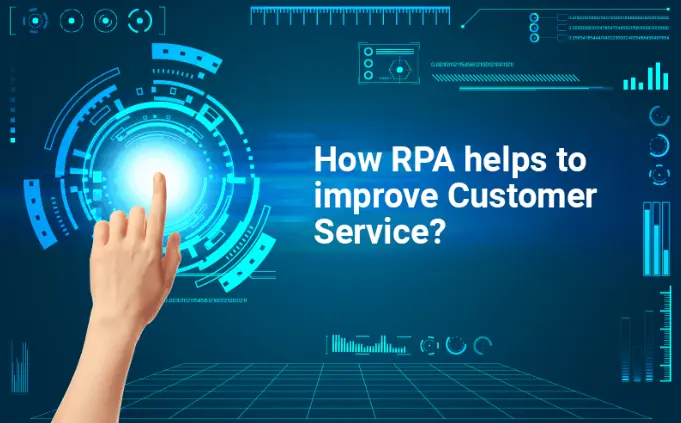
Assessing the need for RPA in customer service
Assessing the need for Robotic Process Automation (RPA) in CS is a critical step in implementing RPA technology. It involves evaluating the current state of the customer service operations, identifying pain points and areas for improvement, and determining whether RPA is a suitable solution. This assessment should consider factors such as the volume and complexity of customer service tasks, the level of automation currently in place, and the potential benefits and risks of implementing RPA. By conducting a thorough needs assessment, businesses can identify the areas where RPA can have the greatest impact, develop a clear understanding of the potential benefits and costs, and make informed decisions about implementing RPA in customer service. This approach can lead to more successful and effective RPA solutions, improved customer experiences, and increased efficiency and productivity.
Identifying customer service tasks suitable for RPA
Identifying the customer service tasks suitable for Robotic Process Automation (RPA) is a crucial step in implementing RPA technology. It involves evaluating the various customer service tasks and processes and determining which tasks can be automated effectively using RPA. Some excellent customer service tasks for RPA include data entry, processing, order processing, and scheduling appointments.
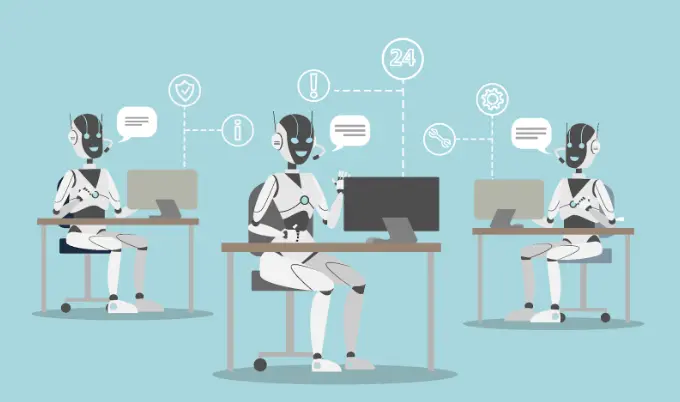
To identify the tasks that are suitable for RPA, businesses must consider factors such as the complexity of the task, the frequency at which it is performed, the volume of data involved, and the potential benefits of automation. For example, highly repetitive tasks requiring minimal human decision-making are excellent candidates for RPA. Identifying suitable tasks for RPA requires a comprehensive understanding of the customer service operation and the specific tasks that can be automated. This understanding can be gained through data analysis, process mapping, and consultation with customer service representatives. By identifying the tasks best suited for RPA, businesses can create more efficient and effective customer service processes to improve customer satisfaction and reduce costs.
Designing and Implementing RPA Solutions
Designing and implementing Robotic Process Automation (RPA) solutions requires careful planning and execution to ensure the automation is effective, efficient, and sustainable. The first step is to define the scope of the RPA solution, including which tasks will be automated and how the automation will be integrated into the existing customer service process.

Once the scope has been defined, the RPA solution must be designed, including selecting the appropriate RPA tools, developing automation scripts, and testing and validating the solution. The design phase should also include developing a plan for deploying and maintaining the RPA solution, including training and support for the customer service team.
Implementation involves deploying the RPA solution into the customer service process and monitoring its performance to ensure it achieves the desired outcomes. This involves ongoing monitoring, analysis, and optimization of the RPA solution to ensure that it continues to meet the changing needs of the customer service operation. Designing and implementing RPA solutions in customer service requires carefully balancing technical expertise and customer service knowledge. By designing and implementing RPA solutions effectively, businesses can achieve significant improvements in efficiency, accuracy, and customer satisfaction.
Benefits of RPA in Customer Service

Robotic Process Automation (RPA) has become increasingly popular in recent years to automate repetitive, manual tasks in customer service. Using RPA technology in customer service has numerous benefits, including increased efficiency, improved accuracy, and enhanced customer experiences.
- One of the primary benefits of RPA in customer service is the ability to automate routine and repetitive tasks, such as data entry and order processing. Businesses can free up valuable employee time and improve overall efficiency by automating these tasks. This allows customer service representatives to focus on more complex tasks that require human decision-making and problem-solving skills.
- RPA can help improve accuracy and reduce errors in customer service tasks. Unlike humans, robots can perform tasks with high precision and consistency, reducing the likelihood of errors and improving overall quality. This can lead to better customer experiences, as customers are more likely to receive accurate and timely service.
- RPA can also help improve the speed of customer service processes, reducing the time it takes to complete tasks and increasing overall productivity. This can lead to faster response times to customer inquiries and complaints, which can improve customer satisfaction.
- Another benefit of RPA in customer service is the ability to scale operations without adding additional staff. As customer service demand increases, RPA can be used to handle more tasks and processes without the need to hire additional staff. This can lead to significant cost savings for businesses.
Using RPA in customer service has numerous benefits. It can increase efficiency, improve accuracy, enhance customer experiences, provide faster response times, and save cost. By leveraging RPA technology, businesses can create more efficient and effective customer service processes.
Best Practices for Implementing RPA in Customer Service
Robotic Process Automation (RPA) has the potential to revolutionize customer service by automating routine tasks and freeing up valuable employee time to focus on more complex tasks. However, implementing RPA in customer service requires careful planning and execution to ensure that automation is effective, efficient, and sustainable. To help businesses implement RPA in customer service, there are several best practices to follow.

Defining the scope of the RPA solution
It is important to define the scope of the RPA solution, including which tasks will be automated and how the automation will be integrated into the existing customer service process. This involves identifying the most repetitive and time-consuming tasks and assessing the feasibility of automating these tasks. It is also important to involve stakeholders from across the organization in the planning process to ensure that the RPA solution aligns with broader business objectives.
Selection of the appropriate RPA tools
The selection of the appropriate RPA tools is critical for the success of the automation. Various RPA tools are available, each with its own strengths and weaknesses. It is important to choose a tool suitable for the specific needs of the customer service operation, taking into account factors such as the complexity of the tasks to be automated, the level of technical expertise of the team, and the scalability of the solution.
Development of automation scripts
The development of automation scripts should follow best practices for software development, including version control, code reviews, and testing. This ensures the automation is reliable, maintainable, and easy to update in response to changing business needs.
Deployment of the RPA solution
The deployment of the RPA solution should be carefully planned and executed. The deployment should include thorough testing and validation to ensure it achieves the desired outcomes. It is also important to provide training and support to the customer service team. It helps in ensuring they are comfortable using the new technology.
Ongoing monitoring
Ongoing monitoring, analysis, and optimization of the RPA solution are critical to ensuring its continued success. This involves tracking key performance metrics, identifying areas for improvement, and making necessary adjustments to the automation as needed.
Challenges in Implementing RPA in Customer Service
Implementing Robotic Process Automation in CS can present various challenges for businesses. The implementation process can be complex and may require significant changes to existing workflows and processes. Some of the key challenges in implementing RPA in CS include:
- Identifying the right processes: It is crucial to identify the right processes to automate through RPA. Not all processes are suitable for automation. Businesses need to carefully evaluate the suitable processes to see the most significant benefits.
- Integration with legacy systems: In many cases, businesses may have legacy systems in place that are not compatible with RPA technology. This can make integration with RPA systems challenging and require significant IT resources.
- Ensuring data quality: RPA systems rely on accurate data to function effectively. Ensuring the quality of data can be a significant challenge. Especially, when the data is available across multiple systems and databases.
- Managing change: Implementing RPA in customer service requires changes to existing processes and workflows. Managing these changes can be challenging, particularly if there is resistance from employees who may be skeptical of the technology.
- Maintaining RPA systems: Once RPA systems are in place, they require ongoing maintenance and monitoring to ensure they continue to function effectively. This can be a significant challenge, particularly for businesses with limited IT resources.
Despite these challenges, implementing RPA in customer service can deliver significant benefits. It includes improved efficiency, enhanced customer experiences, and cost savings. By carefully planning and addressing these challenges, businesses can successfully implement RPA systems and realize these benefits.
Real-World Examples of RPA Implementation in Customer Service
Robotic Process Automation (RPA) has become an increasingly popular solution for businesses looking to improve their CS operations. In recent years, many companies have successfully implemented RPA in their CS departments. It helped in significantly improving efficiency, cost savings, and customer satisfaction. Some of the most notable case studies on RPA implementation in customer service include:
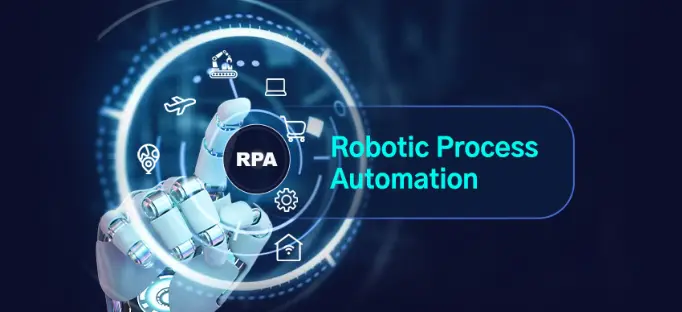
-
Sprint
Sprint, a telecommunications company, implemented RPA to automate its order entry and processing system. By automating the process, Sprint reduced the processing time by 80% and improved accuracy by 99%.
-
American Express
American Express used RPA to automate its customer dispute resolution process. This resulted in a 50% reduction in processing time and a 90% reduction in errors, leading to improved customer satisfaction.
-
Bank of America
Bank of America used RPA to automate its mortgage loan processing system. By automating the process, Bank of America was able to reduce the processing time by 75%, resulting in significant cost savings and improved customer satisfaction.
-
Coca-Cola
Coca-Cola implemented RPA to automate its customer order processing system. By automating the process, Coca-Cola was able to reduce the processing time by 40% and improve order accuracy by 99.5%.
-
Vodafone
Vodafone, a telecommunications company, used RPA to automate its customer billing and invoicing system. By automating the process, Vodafone reduced the processing time by 90% and improved accuracy by 100%.
-
Telecom company
A telecom company implemented RPA to automate its CS operations, specifically for the order and delivery process. By automating the process, the company was able to reduce the time it took to complete an order from two days to just a few hours. This led to improved customer satisfaction and increased revenue for the company.
-
Target
An e-commerce company Target implemented RPA to automate order processing and CS operations. By automating these processes, the company could reduce the time it took to process orders and resolve customer inquiries. This led to improved customer satisfaction and increased revenue for the company.
Another popular example is of amazon customer service. Anyways, these case studies demonstrate the benefits of RPA in CS, including improved efficiency, reduced costs, and enhanced customer experiences. By automating repetitive and rule-based tasks, businesses can free up employees to focus on more complex and value-added tasks. It can lead to increased productivity and innovation. As more businesses adopt RPA technology, we can expect its successful implementation in customer service.
Conclusion
Robotic Process Automation (RPA) can benefit customer service operations significantly, including improved efficiency, reduced costs, and enhanced business experiences. By automating repetitive and rule-based tasks, businesses can free up employees to focus on more complex and value-added tasks. However, implementing RPA in customer service also has challenges that can create difficulties. By following best practices and learning from successful case studies, businesses can successfully implement RPA in their operations and improve the overall customer experience.
Tagged
Share This Article
This article explores the potential benefits and challenges of implementing Robotic Process Automation (RPA) in customer service (CS), focusing on improving the overall customer experience. It will cover the definition and advantages of RPA, steps for implementation, best practices, challenges, real-world implementations, and future prospects. The goal is to provide insights for businesses considering RPA as a tool for enhancing their CS operations.

What Is Robotic Process Automation (RPA)?

Robotic Process Automation (RPA) is a rapidly emerging technology transforming how businesses operate. At its core, RPA is a software tool that automates repetitive and manual tasks typically performed by humans. These tasks can range from data entry and data processing to customer service and support functions.
RPA tools utilize algorithms and machine learning to perform these tasks with minimal human intervention, significantly improving efficiency, productivity, and accuracy. RPA technology is based on the principles of artificial intelligence (AI) and machine learning, which enables it to learn and adapt to new tasks and processes over time. This means that RPA can improve its performance as it continues to work and gather data. It also means that RPA has the potential to significantly reduce the need for human intervention in many business processes.
As RPA continues to evolve and gain popularity, it is expected to play an increasingly important role in many industries, including finance, healthcare, manufacturing, and customer service. The benefits of RPA are numerous, including cost savings, increased efficiency, and improved accuracy.
Understanding Robotic Process Automation
Robotic Process Automation (RPA) is a rapidly growing technology changing how businesses operate. It is a software technology that uses Artificial Intelligence (AI) and Machine Learning (ML) to automate routine, repetitive, and mundane tasks that humans typically perform. RPA tools can interact with computer systems in the same way as human users, enabling them to perform tasks such as data entry, data processing, and customer service without human intervention. RPA is based on the principles of software robots, which are designed to mimic human actions and behaviors. These software robots can perform tasks with speed and accuracy without the need for breaks or downtime, making them highly efficient and effective. RPA technology is highly adaptable, enabling it to learn and adapt to new tasks and processes.

One of the key benefits of RPA is that it can be integrated with existing systems and applications without requiring significant changes to be made to those systems. This makes it an ideal solution for businesses looking to automate their processes without incurring significant costs or downtime. RPA technology is highly scalable, enabling businesses to expand their automation efforts as their needs change and grow. With RPA, businesses can achieve significant cost savings, improve efficiency and accuracy, and free up human resources to focus on more complex tasks requiring human expertise. RPA continues to evolve and become more sophisticated, it is expected to become an increasingly important technology for businesses across a wide range of industries.
RPA Implementation in Customer Service
Robotic Process Automation (RPA) has the potential to revolutionize the customer service industry by automating routine tasks and freeing up human resources to focus on more complex issues. Implementing RPA in CS requires a thorough assessment of the business needs, identification of suitable tasks, and designing and implementing of effective RPA solutions. With the right approach, businesses can benefit from increased efficiency, improved accuracy, and enhanced customer experiences through using RPA in customer service.

Assessing the need for RPA in customer service
Assessing the need for Robotic Process Automation (RPA) in CS is a critical step in implementing RPA technology. It involves evaluating the current state of the customer service operations, identifying pain points and areas for improvement, and determining whether RPA is a suitable solution. This assessment should consider factors such as the volume and complexity of customer service tasks, the level of automation currently in place, and the potential benefits and risks of implementing RPA. By conducting a thorough needs assessment, businesses can identify the areas where RPA can have the greatest impact, develop a clear understanding of the potential benefits and costs, and make informed decisions about implementing RPA in customer service. This approach can lead to more successful and effective RPA solutions, improved customer experiences, and increased efficiency and productivity.
Identifying customer service tasks suitable for RPA
Identifying the customer service tasks suitable for Robotic Process Automation (RPA) is a crucial step in implementing RPA technology. It involves evaluating the various customer service tasks and processes and determining which tasks can be automated effectively using RPA. Some excellent customer service tasks for RPA include data entry, processing, order processing, and scheduling appointments.

To identify the tasks that are suitable for RPA, businesses must consider factors such as the complexity of the task, the frequency at which it is performed, the volume of data involved, and the potential benefits of automation. For example, highly repetitive tasks requiring minimal human decision-making are excellent candidates for RPA. Identifying suitable tasks for RPA requires a comprehensive understanding of the customer service operation and the specific tasks that can be automated. This understanding can be gained through data analysis, process mapping, and consultation with customer service representatives. By identifying the tasks best suited for RPA, businesses can create more efficient and effective customer service processes to improve customer satisfaction and reduce costs.
Designing and Implementing RPA Solutions
Designing and implementing Robotic Process Automation (RPA) solutions requires careful planning and execution to ensure the automation is effective, efficient, and sustainable. The first step is to define the scope of the RPA solution, including which tasks will be automated and how the automation will be integrated into the existing customer service process.

Once the scope has been defined, the RPA solution must be designed, including selecting the appropriate RPA tools, developing automation scripts, and testing and validating the solution. The design phase should also include developing a plan for deploying and maintaining the RPA solution, including training and support for the customer service team.
Implementation involves deploying the RPA solution into the customer service process and monitoring its performance to ensure it achieves the desired outcomes. This involves ongoing monitoring, analysis, and optimization of the RPA solution to ensure that it continues to meet the changing needs of the customer service operation. Designing and implementing RPA solutions in customer service requires carefully balancing technical expertise and customer service knowledge. By designing and implementing RPA solutions effectively, businesses can achieve significant improvements in efficiency, accuracy, and customer satisfaction.
Benefits of RPA in Customer Service

Robotic Process Automation (RPA) has become increasingly popular in recent years to automate repetitive, manual tasks in customer service. Using RPA technology in customer service has numerous benefits, including increased efficiency, improved accuracy, and enhanced customer experiences.
- One of the primary benefits of RPA in customer service is the ability to automate routine and repetitive tasks, such as data entry and order processing. Businesses can free up valuable employee time and improve overall efficiency by automating these tasks. This allows customer service representatives to focus on more complex tasks that require human decision-making and problem-solving skills.
- RPA can help improve accuracy and reduce errors in customer service tasks. Unlike humans, robots can perform tasks with high precision and consistency, reducing the likelihood of errors and improving overall quality. This can lead to better customer experiences, as customers are more likely to receive accurate and timely service.
- RPA can also help improve the speed of customer service processes, reducing the time it takes to complete tasks and increasing overall productivity. This can lead to faster response times to customer inquiries and complaints, which can improve customer satisfaction.
- Another benefit of RPA in customer service is the ability to scale operations without adding additional staff. As customer service demand increases, RPA can be used to handle more tasks and processes without the need to hire additional staff. This can lead to significant cost savings for businesses.
Using RPA in customer service has numerous benefits. It can increase efficiency, improve accuracy, enhance customer experiences, provide faster response times, and save cost. By leveraging RPA technology, businesses can create more efficient and effective customer service processes.
Best Practices for Implementing RPA in Customer Service
Robotic Process Automation (RPA) has the potential to revolutionize customer service by automating routine tasks and freeing up valuable employee time to focus on more complex tasks. However, implementing RPA in customer service requires careful planning and execution to ensure that automation is effective, efficient, and sustainable. To help businesses implement RPA in customer service, there are several best practices to follow.

Defining the scope of the RPA solution
It is important to define the scope of the RPA solution, including which tasks will be automated and how the automation will be integrated into the existing customer service process. This involves identifying the most repetitive and time-consuming tasks and assessing the feasibility of automating these tasks. It is also important to involve stakeholders from across the organization in the planning process to ensure that the RPA solution aligns with broader business objectives.
Selection of the appropriate RPA tools
The selection of the appropriate RPA tools is critical for the success of the automation. Various RPA tools are available, each with its own strengths and weaknesses. It is important to choose a tool suitable for the specific needs of the customer service operation, taking into account factors such as the complexity of the tasks to be automated, the level of technical expertise of the team, and the scalability of the solution.
Development of automation scripts
The development of automation scripts should follow best practices for software development, including version control, code reviews, and testing. This ensures the automation is reliable, maintainable, and easy to update in response to changing business needs.
Deployment of the RPA solution
The deployment of the RPA solution should be carefully planned and executed. The deployment should include thorough testing and validation to ensure it achieves the desired outcomes. It is also important to provide training and support to the customer service team. It helps in ensuring they are comfortable using the new technology.
Ongoing monitoring
Ongoing monitoring, analysis, and optimization of the RPA solution are critical to ensuring its continued success. This involves tracking key performance metrics, identifying areas for improvement, and making necessary adjustments to the automation as needed.
Challenges in Implementing RPA in Customer Service
Implementing Robotic Process Automation in CS can present various challenges for businesses. The implementation process can be complex and may require significant changes to existing workflows and processes. Some of the key challenges in implementing RPA in CS include:
- Identifying the right processes: It is crucial to identify the right processes to automate through RPA. Not all processes are suitable for automation. Businesses need to carefully evaluate the suitable processes to see the most significant benefits.
- Integration with legacy systems: In many cases, businesses may have legacy systems in place that are not compatible with RPA technology. This can make integration with RPA systems challenging and require significant IT resources.
- Ensuring data quality: RPA systems rely on accurate data to function effectively. Ensuring the quality of data can be a significant challenge. Especially, when the data is available across multiple systems and databases.
- Managing change: Implementing RPA in customer service requires changes to existing processes and workflows. Managing these changes can be challenging, particularly if there is resistance from employees who may be skeptical of the technology.
- Maintaining RPA systems: Once RPA systems are in place, they require ongoing maintenance and monitoring to ensure they continue to function effectively. This can be a significant challenge, particularly for businesses with limited IT resources.
Despite these challenges, implementing RPA in customer service can deliver significant benefits. It includes improved efficiency, enhanced customer experiences, and cost savings. By carefully planning and addressing these challenges, businesses can successfully implement RPA systems and realize these benefits.
Real-World Examples of RPA Implementation in Customer Service
Robotic Process Automation (RPA) has become an increasingly popular solution for businesses looking to improve their CS operations. In recent years, many companies have successfully implemented RPA in their CS departments. It helped in significantly improving efficiency, cost savings, and customer satisfaction. Some of the most notable case studies on RPA implementation in customer service include:

-
Sprint
Sprint, a telecommunications company, implemented RPA to automate its order entry and processing system. By automating the process, Sprint reduced the processing time by 80% and improved accuracy by 99%.
-
American Express
American Express used RPA to automate its customer dispute resolution process. This resulted in a 50% reduction in processing time and a 90% reduction in errors, leading to improved customer satisfaction.
-
Bank of America
Bank of America used RPA to automate its mortgage loan processing system. By automating the process, Bank of America was able to reduce the processing time by 75%, resulting in significant cost savings and improved customer satisfaction.
-
Coca-Cola
Coca-Cola implemented RPA to automate its customer order processing system. By automating the process, Coca-Cola was able to reduce the processing time by 40% and improve order accuracy by 99.5%.
-
Vodafone
Vodafone, a telecommunications company, used RPA to automate its customer billing and invoicing system. By automating the process, Vodafone reduced the processing time by 90% and improved accuracy by 100%.
-
Telecom company
A telecom company implemented RPA to automate its CS operations, specifically for the order and delivery process. By automating the process, the company was able to reduce the time it took to complete an order from two days to just a few hours. This led to improved customer satisfaction and increased revenue for the company.
-
Target
An e-commerce company Target implemented RPA to automate order processing and CS operations. By automating these processes, the company could reduce the time it took to process orders and resolve customer inquiries. This led to improved customer satisfaction and increased revenue for the company.
Another popular example is of amazon customer service. Anyways, these case studies demonstrate the benefits of RPA in CS, including improved efficiency, reduced costs, and enhanced customer experiences. By automating repetitive and rule-based tasks, businesses can free up employees to focus on more complex and value-added tasks. It can lead to increased productivity and innovation. As more businesses adopt RPA technology, we can expect its successful implementation in customer service.
Conclusion
Robotic Process Automation (RPA) can benefit customer service operations significantly, including improved efficiency, reduced costs, and enhanced business experiences. By automating repetitive and rule-based tasks, businesses can free up employees to focus on more complex and value-added tasks. However, implementing RPA in customer service also has challenges that can create difficulties. By following best practices and learning from successful case studies, businesses can successfully implement RPA in their operations and improve the overall customer experience.




